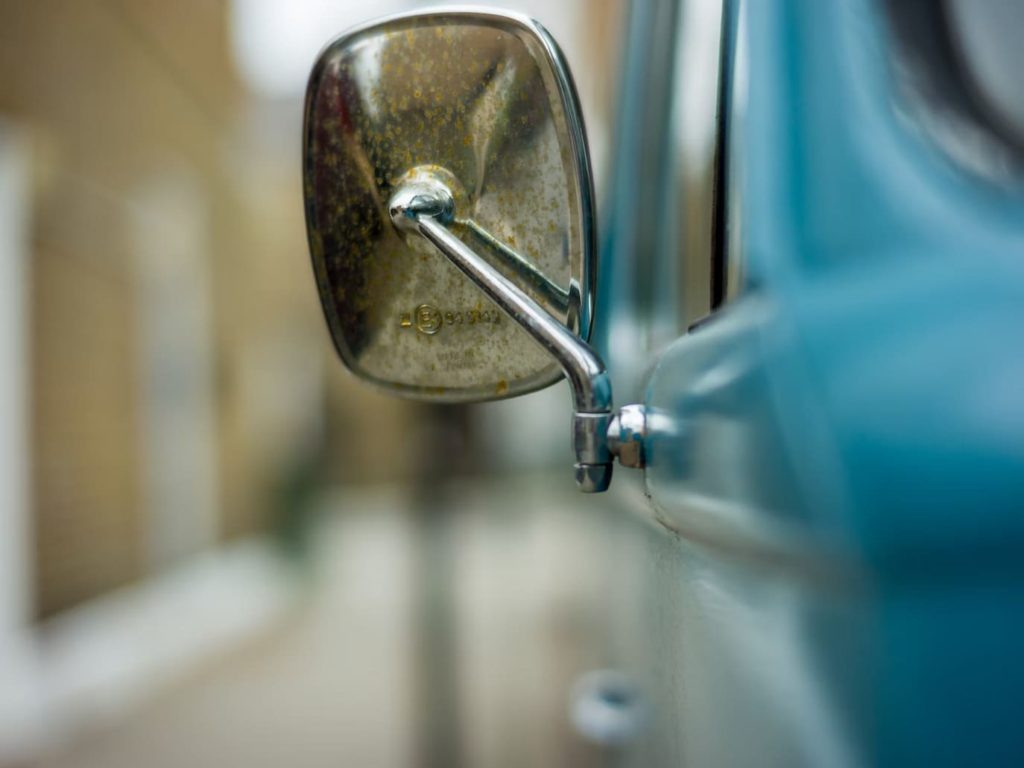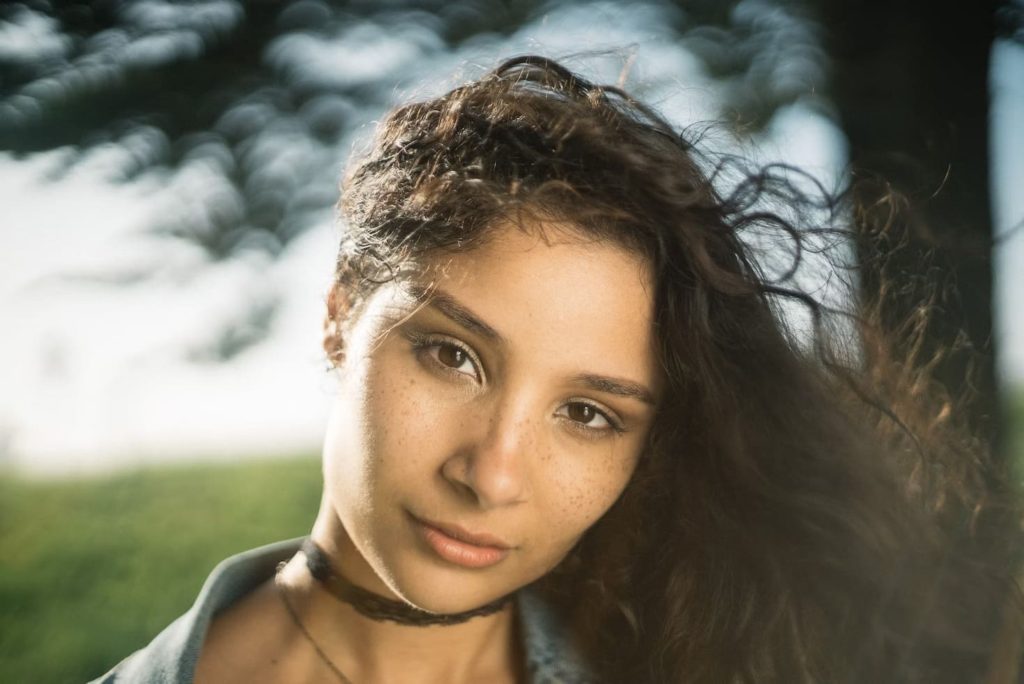Depth of Field: What is It and How Does it Work in Film?
Depth of field is a term that is used in photography, cinema, and even in other art forms such as video games.

It is a technique that relates to the focus of any video or photo that you take. Depth of field photography is something a lot of us have experienced, even on our phones. If your device has a portrait mode, this is likely to impact depth of field and use this as a creative effect and to improve the end result.
What is Depth of Field?
Firstly, we need to explain depth of field in film, and how it can impact the look and feel of a piece of footage.

Depth of field is the distance from the camera where the objects are in sharp focus. There are likely to be areas in front of this distance, or behind, which are less focused or even completely blurred.
Things like the choice of camera and the camera settings used play a huge role in the depth of field and the effect it has. If very little is in focus, we call this “shallow”. We’ve all seen examples of shallow depth of field photography. For example, a portrait of a person standing in a field, with some leaves and branches in the foreground, and fields behind them. Both the branches and the fields may be out of focus, but the person that is the main subject is perfectly in focus.
If this is still tough for you to visualize then you may want to think of it like lines on the floor. Say in a studio there are 20 lines on the floor. Whatever is between 5 and 6 may be in focus, the rest will be blurred. This depends on the settings, and would be an example of making a shallow depth of field film scene.
There are many different settings and depths that can be used. While directors can get more creative when it comes to shallow depths of fields taking video of one person, or a couple of people, huge crowd shots can be more difficult. This calls for deep focus to get everybody in focus.
When it comes to the planning stage of a film, such as storyboarding, you may decide that there are scenes where you want to use this effect. That means that you’ll need to plan accordingly when it comes to equipment and location.
Uses of Shallow Depth of Field
When people talk about using depth of field in film, they are often actually talking about shallow depth of field. This is when just a small portion of what is on screen is fully in focus. It may still be clear what is going on in the background or it may completely blur away. This all depends on camera settings and equipment.
Uses of a shallow depth of field may include the following:
To Blur Away Unsightly Backgrounds
This has long been a use of depth of field in photography and can also be used in film. If you are shooting on location and the items are not things that you want included in your shot, then it is possible to blur them completely. This is also sometimes used as a way to blur the identity of people who may be in the background.
This isn’t the most common use of the technique in video but it is one way that the method can be used.
For a Cinematic Effect
Certain effects have been used by certain directors and in certain films a lot, and therefore look cinematic.
Shots with a shallow depth of field can give quite a dramatic and cinematic look to a scene. For instance, it is possible that the blur in the background may give an effect called bokeh which can look very visually impressive.
To Focus on An Item
The director may want to show us a certain item or action that is taking place. For example, the below still from the Insight Studios portfolio is focusing on the delicious food. Notice how both the hand in the foreground cutting the cake and the background are blurred, this is a deliberate method of drawing attention to one item.
Similar techniques could be used in things like tutorial videos. If a video is showing how to perform a certain action with your hands, the actor’s hands may be in focus while the rest of the shot is blurred. This helps people to see exactly what the director intends.
To Focus on an Actor or Their Emotions
One of the main reasons a shallow depth of field is used is to focus on one specific actor within the scene. The shallow depth of field and focus on one character can help to pick one specific character out of a crowd or it can be used to portray a sense of intimacy with the one character, seeing their expressions and acting skills in close detail.
Often, a shallow depth of field has the effect of making us feel a lot closer to the actor in question. Shots like this may be used sparingly at a crucial part in the plot, for instance if a character is having a moment of realization or they are particularly emotional. It can help to emphasize those feelings.
Understanding Deep Focus
Deep focus is also a type of depth of field, but it relies on a large portion of the scene being in perfect focus.
Deep focus may be used by a director, videographer, or cinematographer, especially if they want to show all of the action that is taking place. For example, the background of an image may have something crucial taking plot or could be part of setting the scene.
Depth of Field Examples
We’ve shared a video below with more specific depth of field examples from film and video, but stills are able to show what we mean regarding depth of field, too. As with a lot of video and photography techniques, this is best understood by visual representation.
The above shot from Interstellar is a fantastic example of a shallow depth of field. As there is only one actor/subject in shot, the director is able to use a shallow effect without having to worry about losing items in focus. Both the foreground and the background are blurred, but the actor is in perfect focus with pin-sharp eyes. This is a way to show the audience how the actor is feeling and draw attention to their performance.
You’ll also notice that this way of framing and focusing the shot adds a very dramatic feel to the shot.
Though the depth of field film techniques are important, some great examples can be gathered by analyzing photographs that use the effect well, such as the one below.

This image shows a classic portrait that uses depth of field to excellent effect. The subject is in focus, but the rest of the shot blurs away. This helps to draw focus to the woman in the shot, and her emotions, and provides an attractive background without providing too much in the way of distraction.
These are just a couple of examples of a shallow depth of field being used. In a group shot, we may see more of a wide depth of field to ensure that all characters are captured.
How to Achieve the Right Depth of Field
The aperture value on the camera is key to depth of field. This is measured in F Stops on the camera.
The video below explains some of the pros and cons of different depths of fields and “focal lengths”.
There are often trade-offs to consider and limitations regarding light getting into the camera and other factors. Get things wrong and it can ruin the whole shot. Your camera depth of field settings are crucial, and that is why having a professional team of video professionals can help to achieve the very best results.
The opposite of a shallow depth of field is referred to as ‘deep focus’ when a lot of things are in focus. Some directors use this masterfully and are able to create a stunning effect in the process. Both shallow depth of field and deep focus are creative tools that can both work depending on what is required.
A good director and cinematographer will have mastered the use of depth of field, and know when to use it to the best possible effect in their film project.
Conclusion
Once you understand depth of field, you will probably start to notice it, and the choices directors take regarding their focus in shots.
This is one of the most powerful tools when it comes to evoking emotion or directing an audience’s attention within a video, plus it can provide a deeply cinematic look that can help with the general styling of a video.
In order to use this effect to its best possible potential, and ensure you get the exact look and impact you are hoping for, reach out to our reliable and professional team today.